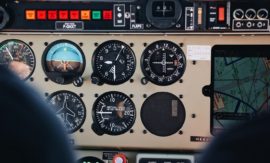Intended learning outcomes: Produce an overview on Operations scheduling and dispatching. Explain finite forward scheduling.
Operations scheduling is the actual assignment of starting or completion dates to operations or groups of operations (cf. [ASCM22]).
The result of operations scheduling shows when these operations must be done if the production order is to be completed in time. These dates are then used in the dispatching function.
In dispatching, each operation is assigned to the individual workstations . Also, employees, production equipment, and other work aids are definitively assigned to the operation.
Dispatching is a part of production control. It is based on the inventory of work on hand or on the work program produced by detailed planning and scheduling (see Sections 14.2.3, 14.3.1, and 14.3.2). The latter is a time window, such as the coming week, for the inventory of work on hand at the work center.
Shop floor employees generally have the specific knowledge needed for dispatching. They know the secondary constraints in detail, for example
- The individual pieces of equipment at a work center: Not every machine in the work center can perform exactly the same jobs. Certain orders may require machine tools that can be mounted only on certain machines.
- The qualification of employees: Not all workers are qualified to perform exactly the same jobs. Certain orders may demand minimum qualifications.
Dispatching draws on large stores of fragmentary knowledge or knowledge by analogy to earlier cases. Such experience-based knowledge in the heads of supervisors or foremen is usually not structured or available in explicit form. Therefore, in most cases, the function of dispatching is a mental process — albeit supported by the algorithms of capacity planning (Sections 14.2 and 14.3). These algorithms show the probable consequences of prospective dispatching to individual machines in the context of the current situation.
Finite forward scheduling is a scheduling technique for production equipment and other aids, for the individual machines,[note 1507] and possibly also for the workers and other resources, that builds a schedule by proceeding sequentially from the initial period to the final period while observing capacity limits. (cf. [ASCM22]).
Production equipment includes machine tools, devices, NC programs, and equipment for measuring and testing. Aids include drawings.
Finite forward scheduling is based on the current inventory of work on hand at the work center, from medium-term planning within a particular time window. The technique further requires detailed information on the availability of each individual resource. For the needs of the technique, any operations too roughly defined in medium-term planning must be broken down into individual operations and further detailed to individual workstations.
Just as in the case of dispatching, employees who work at the work centers have important knowledge of the situation in their heads. These people tend to be able to make the best decisions about control of operations. For precisely this reason, excessively detailed planning for the medium and long term makes little sense.
Continuation in next subsection (15.2.2.b).
Course section 15.2: Subsections and their intended learning outcomes

15.2 Shop Floor Control — Production Activity Control (PAC) — Manufacturing Execution System (MES)
Intended learning outcomes: Describe the issuance of accompanying documents for production. Explain operations scheduling, dispatching, and finite forward scheduling. Present sequencing methods.

15.2.1 Issuance of Accompanying Documents for Production
Intended learning outcomes: For a production order, identify the shop packet. Describe shop order routing, operation card, parts requisitions and picking list.

15.2.2 Operations Scheduling, Dispatching, and Finite Forward Scheduling
Intended learning outcomes: Produce an overview on Operations scheduling and dispatching. Explain finite forward scheduling.

15.2.2b The Planning Board and the (Electronic) Control Board (Leitstand)
Intended learning outcomes: Describe the loading of production resources in the form of a planning board before and after a new entry to orders on hand. Identify the (electronic) control board (Leitstand).

15.2.3 Sequencing Methods
Intended learning outcomes: Explain sequencing and its objectives.
